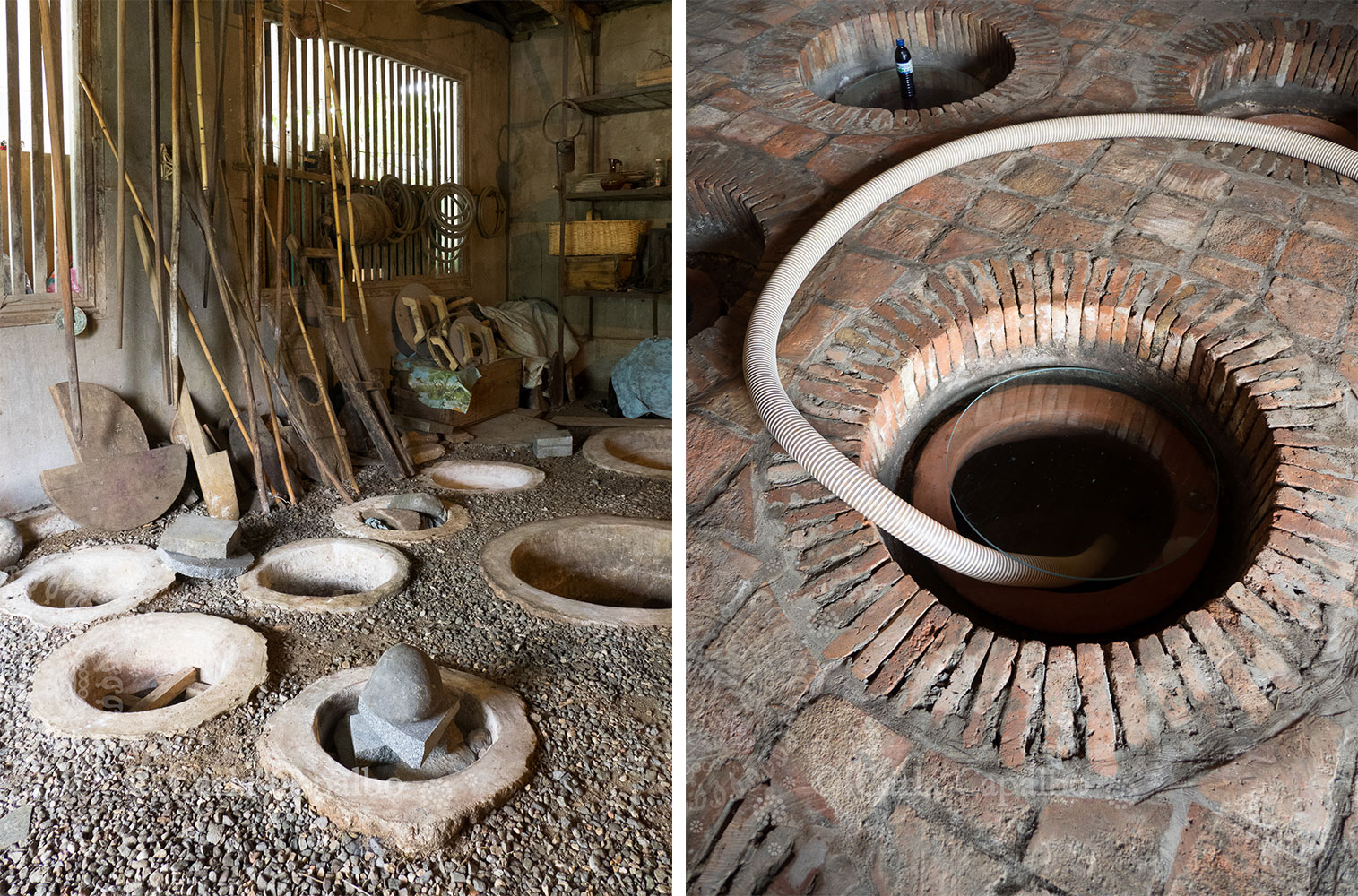After the hand-made terracotta coil pots have been fired and painted inside with beeswax (my book gives detailed information about the qvevri-making process), they’re usually given an external wire armature to prevent cracking when full of liquid, and an external coating of powdered lime with cement or sand for strength and as a disinfectant. The qvevri are buried up to their necks in sand and gravel to facilitate the passage of air and absorb any shocks from the ground. A Georgian cellar contains buried qvevri of varying sizes to accommodate different volumes of wine.
Qvevri cellar; the must is pumped into a qvevri
At harvest time the grapes are crushed – either by foot or now more usually using a hand or mechanical crusher – and pumped or allowed to fall by gravity into a clean qvevri. Depending on the region or winemaker’s style, stems may or may not be included. The winemakers who grow their vines without herbicides and pesticides rely on wild or sponatenous yeasts that live in the grape skins to trigger the first, or alcoholic, fermentation. No ‘selected’ or factory-produced yeasts or other chemical ‘correctors’ are used. Sometimes a tiny amount of sulphite to ward off bacteria may be added, but it’s far less than is common in ‘conventional’ winemaking. Many avoid it altogether.
During fermentation, the cap is punched back down into the must using a long pole with sticks running crosswise through its end. The secondary, or malolactic, fermentation follows the first as the wine’s tart, malic acids (as in apples) are converted to softer-tasting, lactic acid (as in milk).
Amiran Vepkhvadze checks on his pressed grapes · Punching down the cap at Pheasant's Tears
When the fermentation has run its course, the solids drop naturally into the qvevri’s pointed bottom. Red wines may be removed from their solids soon after this, while white wines are usually given the short or extended skin contact that characterizes the so-called orange wines.
Macerated qvevri wines offer a range of colours
When the fermentation is complete, the qvevri’s top is sealed, though a tiny amount of oxygen still enters through the clay pores. The wine may be separated from the skins very quickly, or remain on them for several months, extracting tannins, phenols, flavour and anthocyanins from them as it goes. If long-macerated Kakhetian wines tend to be robust in their colour and tannins, west-Georgian wines are often very fresh, paler in hue and lower in alcohol thanks to spending much less, if any, time on the skins.
The wines are pumped out of the qvevri when the winemaker decides to take them off the lees (in the old days, a dried-gourd scoop was used) and either bottled and sold, or moved to a clean qvevri to continue the aging. There are no barrels or vats in a traditional qvevri cellar.





